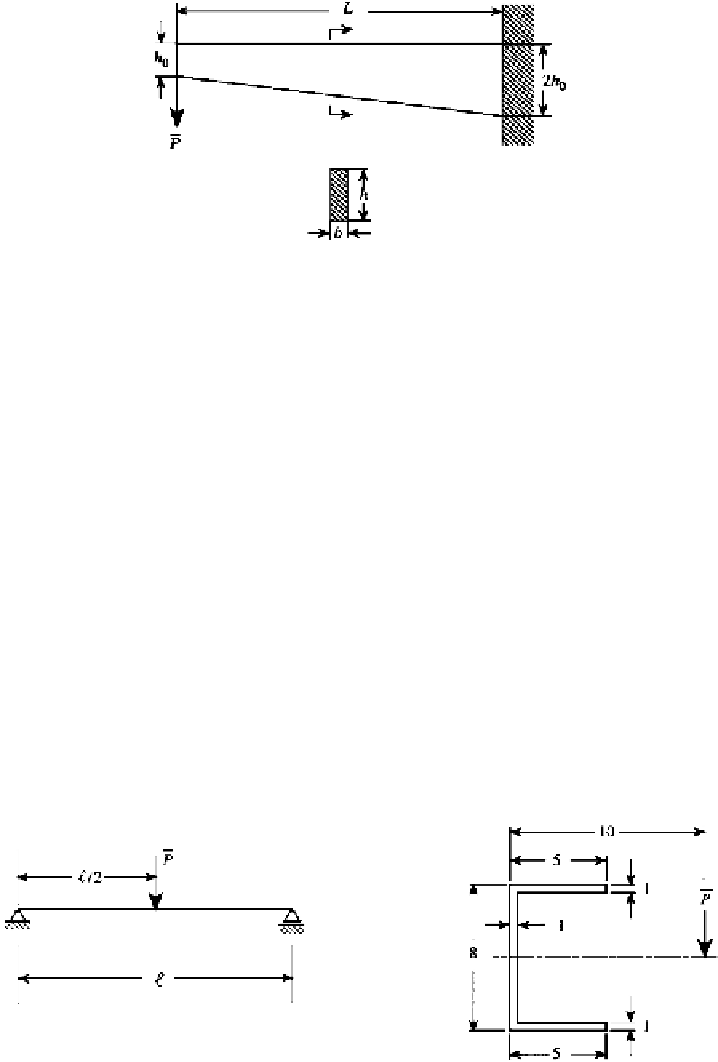Information Technology Reference
In-Depth Information
12.2 Derive the governing differential equations of the beam shown in Fig. P12.2.
FIGURE P12.2
12.3 Compute the normal stress and shear stress at the fixe
d
end of the beam in Fig. P12.2,
assuming that
h
0
=
20,000 lb.
12.4 Show that the principal moments of inertia are defined by Eqs. (12.19b, c.)
12.5 Verify that the shear center coordinates are given by Eq. (12.20b).
12.6 Show that Eq. (12.21) represents the distance of the shear center from the
10 in.,
L
=
120 in.,
b
=
3 in., and
P
=
y,
z
axes.
12.7 Provide a detailed derivation of Eq. (12.22a).
12.8 Use the Hellinger-Reissner variational principle to obtain the governing differential
equations of a straight beam.
Hint:
See Chapter 2, Example 2.11.
12.9 Find a system of first-order governing differential equations for the extension, torsion,
and bending of a bar.
Hint:
Convert Eq. (12.33) to first order form.
12.10 Calculate the displacements of a simply-supported thin-walled beam of Fig. P12.10
at the middle point along the span. The cross-sections of the beam are assumed to be
free to warp.
FIGURE P12.10
Cross-Sectional Properties and Stress Distributions
12.11 Calc
ul
ate the normal and shear stress distributions for the beam shown in Fig. P12.11.
Let
P
pass through the shear center. State why shear stresses found using a finite









Search WWH ::

Custom Search